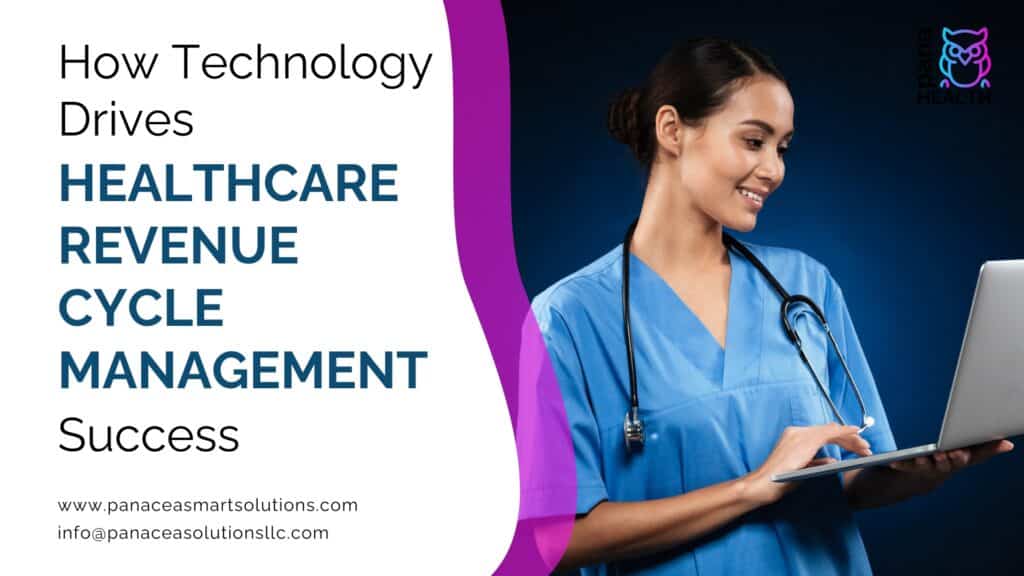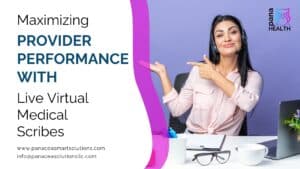Revenue Cycle Management (RCM) is crucial for healthcare organizations to ensure financial stability and operational efficiency. It encompasses processes from patient registration to claims processing, billing, and collections. Revenue Cycle Management increases revenue capture, reduces claim denials, and improves reimbursement cycles. By optimizing RCM, healthcare organizations can improve cash flow, maintain profitability, and provide better patient care and experiences.
However, traditional RCM processes often encounter a myriad of challenges. These include manual data entry leading to errors, inefficient claim processing causing delays in reimbursement, lack of real-time visibility into revenue status, and difficulty in identifying and addressing bottlenecks.
These issues result in increased costs, prolonged payment cycles, and reduced revenue. In such a scenario, embracing technology-driven solutions can help overcome these challenges and streamline RCM operations. Technology has a profound impact on RCM efficiency and effectiveness. Automation of tasks like coding and billing reduces errors and accelerates revenue cycles. Electronic Health Records (EHR) improve data accuracy and flow.
Analytics and advanced tools offer insights for process optimization. Patient portals enhance engagement, leading to timely payments. Overall, revenue cycle management technology streamlines the process, shortens payment cycles, minimizes denials, and increases revenue capture, benefiting both healthcare organizations and patients.
Here, we will understand the role of technology in revenue cycle management and how it is responsible for increased financial performance and patient satisfaction.
Technology Driven Solutions in Revenue Cycle Management
Technology has surfaced as a powerful ally in streamlining revenue cycle management processes in the dynamic healthcare landscape. Let’s understand in detail:
Electronic Health Records (EHR)
Electronic Health Records (EHR) play a critical role in accurate patient data management within healthcare organizations. EHR systems digitally store comprehensive patient information, including medical history, diagnoses, medications, and treatment plans. This centralized and standardized approach ensures easy access to real-time patient data for healthcare providers, reducing errors, improving care coordination, and enhancing patient safety.
EHRs also facilitate seamless data sharing among healthcare professionals, promoting better communication and informed decision-making across the healthcare ecosystem. They offer numerous features and benefits that optimize the entire RCM process in healthcare organizations. EHRs streamline patient data management, reducing administrative burdens, and Integration with RCM software ensures seamless coding, billing, and claims processing, accelerating revenue cycles.
Real-time access to accurate patient information enhances clinical documentation and improves reimbursement accuracy. Ultimately, EHRs enhance RCM efficiency, increase revenue capture, and contribute to better financial health.
Integration of EHR and RCM systems fosters seamless data flow and efficiency in healthcare organizations. Linking patient information from EHRs with RCM processes minimizes duplicate data entry, reducing the risk of errors and improving accuracy. Real-time data access enables quicker claims processing and billing and provides a cohesive healthcare workflow for better patient care.
Data Analytics Role in Revenue Cycle Management
Data analytics plays a crucial role in RCM by providing valuable insights into healthcare organization’s financial performance and operational efficiency. Through data analysis, RCM teams can identify trends, patterns, and areas for process optimization, leading to reduced claim denials, faster reimbursements, and increased revenue capture.
Moreover, predictive analytics aids in forecasting cash flow and potential financial risks. Data-driven decision-making enables healthcare organizations to streamline billing processes, enhance patient engagement, and achieve better financial health while improving overall patient satisfaction.
By assessing historical data and patterns, predictive analytics also help healthcare organizations anticipate potential claim denials or payment delays. This proactive approach allows RCM teams to take corrective actions, such as improving documentation or addressing coding errors, to minimize the risk of revenue disruptions.
Additionally, predictive analytics can assist in optimizing resource allocation by identifying high-risk or high-value accounts. RCM teams can prioritize follow-ups and collection efforts based on the likelihood of payment, maximizing revenue capture and reducing unnecessary costs.
Such analytics also help healthcare practices to develop personalized patient payment plans. By understanding patient behavior and financial capabilities, RCM teams can offer tailored payment options leading to better patient experience and higher collection rates.
Maximize Your Practice Revenue with Panacea Smart Solutions
Patient Engagement Through Technology Based Applications
Engagement of patients is essential for revenue cycle success as it directly impacts the timely payment of medical bills. Actively involving patients in the billing process through transparent communication, user-friendly portals, and personalized payment options improves payment compliance. Such patients are more likely to comprehend their financial responsibilities, make prompt payments, and reduce the risk of unpaid bills or bad debt, leading to a healthier revenue cycle.
Technology-driven patient portals and self-service options revolutionize the patient billing and payment experience. Patient portals provide secure online access to medical records, billing statements, and payment history, empowering patients to review and manage their financial information conveniently.
On the other hand, self-service options allow patients to make payments, set up payment plans, and request cost estimates independently. These user-friendly tools enhance patient engagement, reduce administrative burdens for healthcare providers, and expedite revenue cycles, leading to improved financial outcomes.
Also, personalized communication and digital touchpoints significantly enhance patient satisfaction and timely payments. Healthcare providers can tailor communication to patients’ preferences through targeted messaging, fostering trust and understanding.
Utilizing digital touchpoints like email or text reminders for billing and payment notifications ensures timely delivery and accessibility. Patients feel valued and informed, leading to improved patient experiences and higher engagement, ultimately benefiting revenue cycle management.
Compliance & Security by Using Technology
In such a scenario, revenue cycle management technology plays a vital role in facilitating healthcare organizations’ compliance with regulations like HIPAA. Robust encryption and secure communication channels protect sensitive patient data during transmission. Access controls guarantee that only authorized and appropriate personnel can access patient information.
Automated compliance monitoring and detailed audit trails help identify potential violations and ensure timely action. Furthermore, technologies like AI and ML aid in detecting anomalies and potential security threats. They bolster the overall security posture and play a significant role in establishing robust security and ensuring adherence to ever-changing compliance standards.
Ultimately, technology solutions strengthen data security, privacy, and overall regulatory adherence, safeguarding patient information and maintaining compliance with healthcare regulations.
Final Thoughts
Healthcare is an evolving field, and new challenges and opportunities arise constantly. Therefore, it is important for healthcare organizations to become adaptable to changing market demand and patient preferences. This is where revenue cycle management technology plays an important role; however, staying updated with this is not only about keeping up with the latest trends. Healthcare organizations need to leverage technology to maintain sustainability, enhance patient outcomes, and also for making data-driven decision-making for long-term success.







